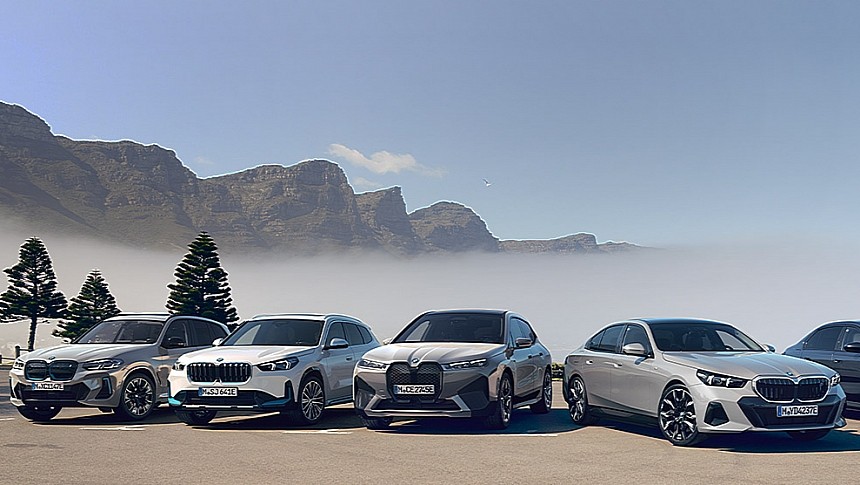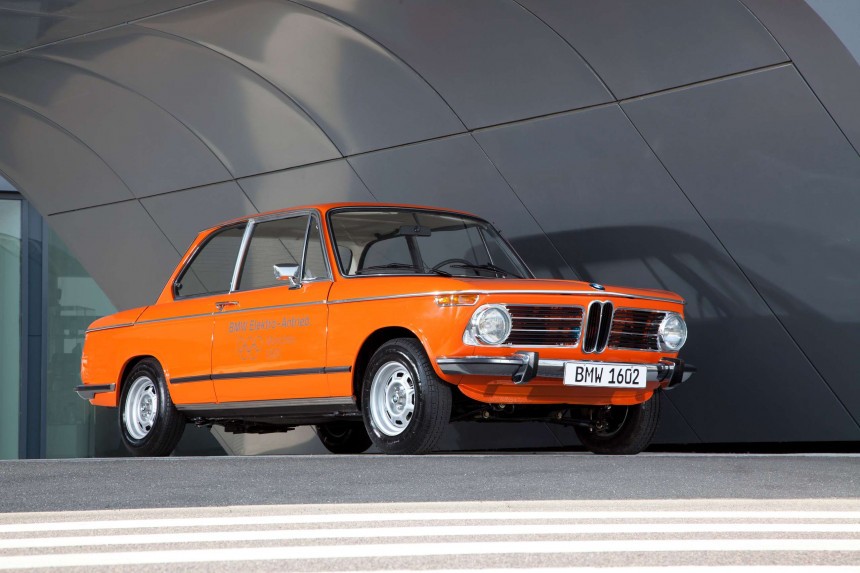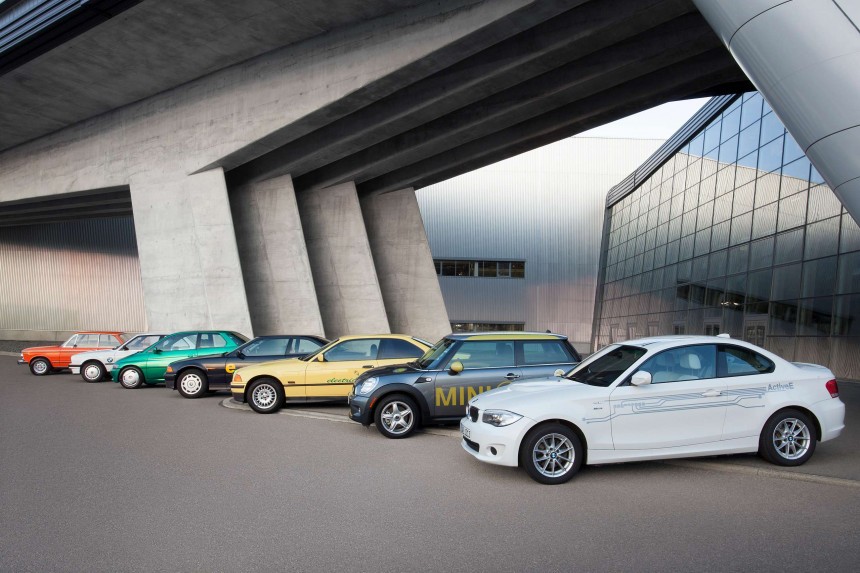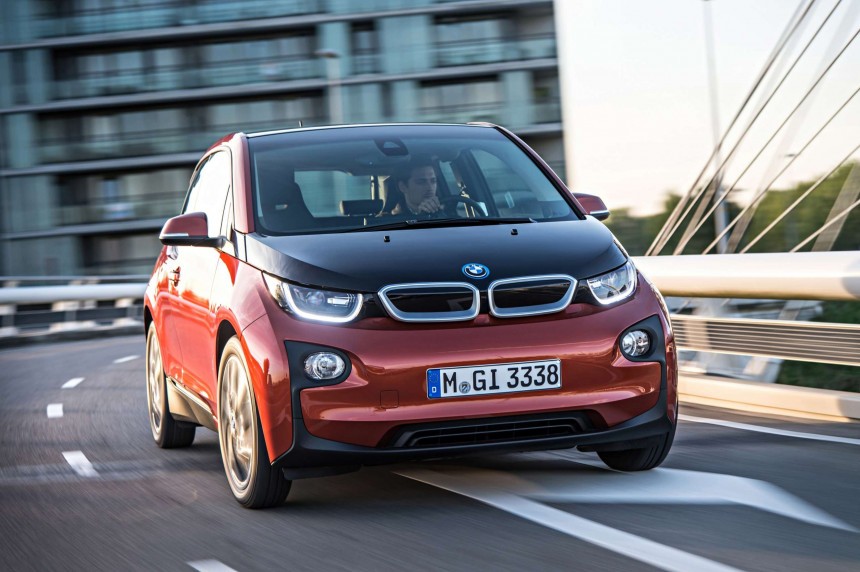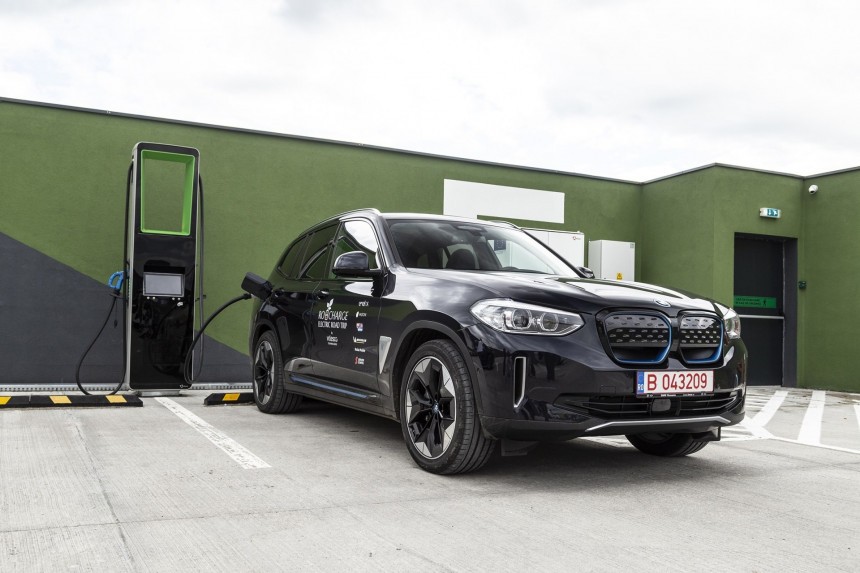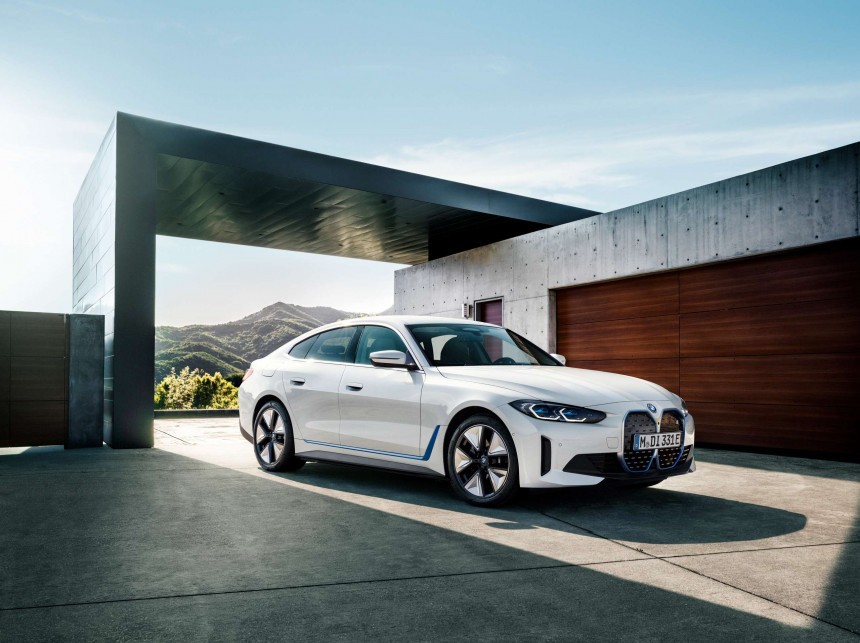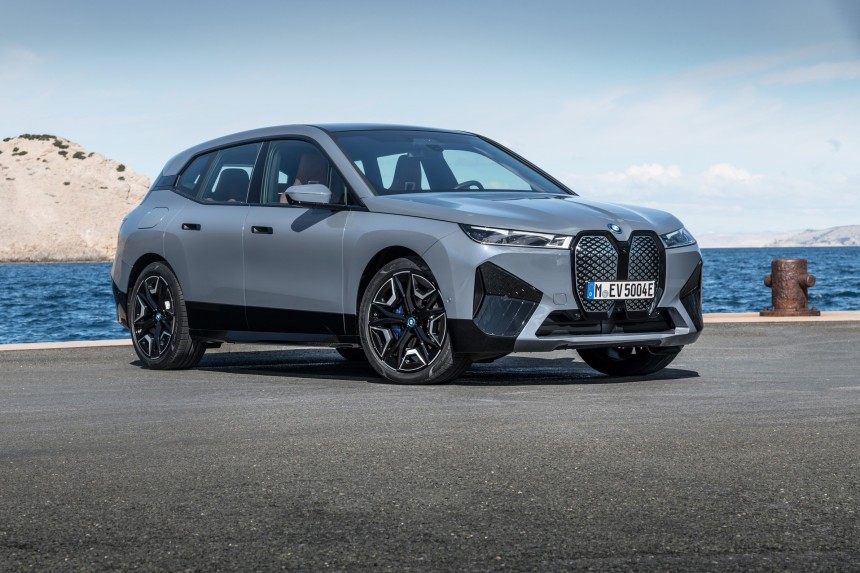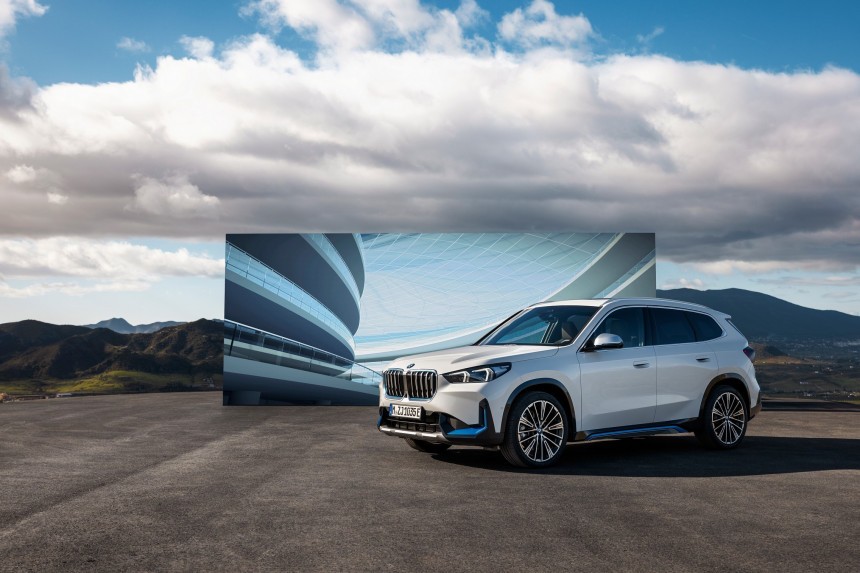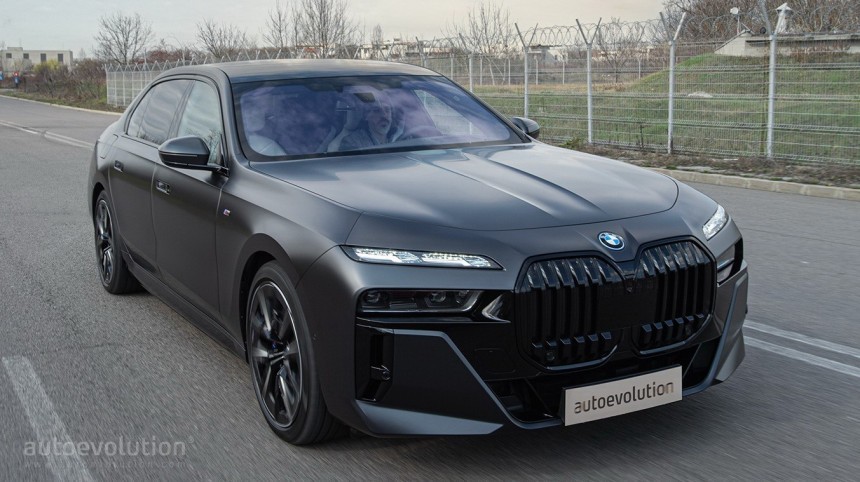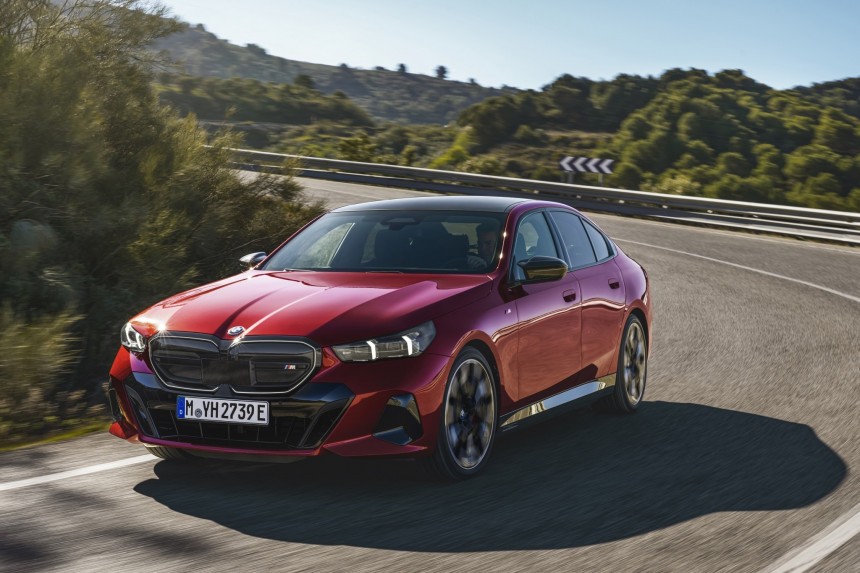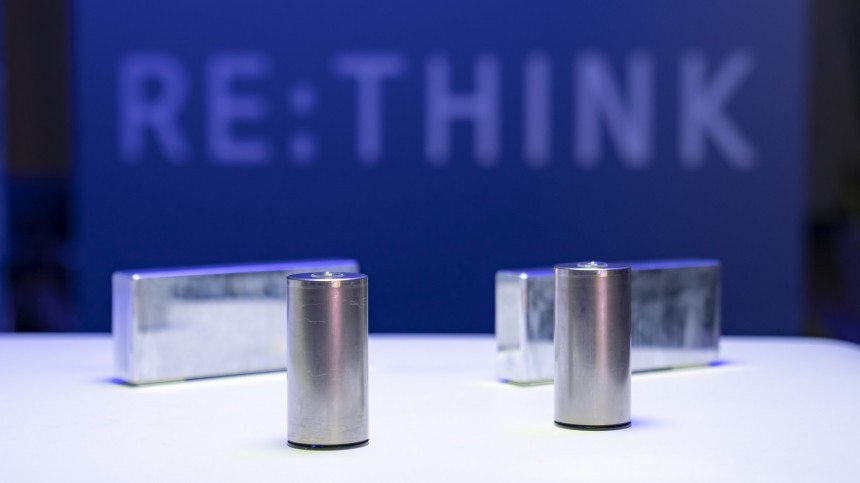Although people usually associate Tesla or the Nissan Leaf with the EV revolution, other carmakers pioneered this field. BMW started early when it introduced two electric cars at the 1972 Munich Olympics. Since then, the Bavarian sportscar maker developed a comprehensive range of electric vehicles that culminated with the launch of the BMW i5 in the summer of 2023.
Electric vehicles may be all the rage today, but they are almost as old as the first automobile, the Benz Patent-Motorwagen, built in 1885 by Karl Benz. The first electric automobile is considered the Flocken Elektrowagen, manufactured in 1888 by Maschinenfabrik A. Flocken in Coburg. Since then, humankind has repeatedly toyed with the electric car way before climate change and pollution convinced us that burning fuel without limits is not such a great idea after all.
If you ask people about the first modern electric vehicles, most will point to the Nissan Leaf or the Tesla Roadster. Still, most carmakers started experimenting with electric cars, some quite early, and BMW was one of them. The Bavarian carmaker now has a wide range of electric vehicles in the lineup, thanks to early research in this field. Its first foray into EVs was made in 1972 when BMW prepared two 1602 electric prototypes for the Munich Olympics.
Following the 1602e project, BMW started various research and development projects, culminating in 1975 with the LS Electric prototype. The secret project never made it into production and for a good reason. Its electric motor produced by Bosch barely developed 17 kW (23 horsepower), and the performance was even worse than that of the 1602e. Some progress, most of you would say. Still, the LS Electric spurred many innovations that would put BMW on a fast track to electromobility.
By 1990, BMW had a fleet of eight 325ix test vehicles converted from all-wheel drive to front-wheel drive, an abomination. The cars would serve as a testbed for novel battery technology using sodium-sulfur chemistry instead of lead-acid. The new batteries had three times the energy density. The project led to the debut of the BMW E1 prototype during the 1991 International Motorshow.
In 2011, BMW launched Project i with the goal of developing the first production electric cars. One year later, BMW announced it would launch its electric vehicles under the BMW i sub-brand. Thanks to the Mini E and BMW ActiveE projects, the foundation was already there. The third pillar came with the development of the BMW Mega City Vehicle and Vision Efficient Dynamics concepts. Both would enter series production as the BMW i3 electric vehicle and the BMW i8 plug-in hybrid, respectively.
The i3 was BMW's first mass-produced electric vehicle. It featured innovative details like the carbon-fiber passenger module bonded on an aluminum chassis. Although its peculiar shape was like no other BMW, it was a huge success. The Bavarians sold over 250,000 units worldwide between 2014 and 2022, when the electric BMW was discontinued.
With its rear-wheel drive and go-kart feeling, the BMW i3 was a fun-to-drive car. Consider the 127 kW (170 horsepower) electric motor for an EV that weighed less than 1,300 kg (2,900 lbs), and you could see how the minuscule electric BMW ruled the city streets. The i3 started its career with an 18.2 kWh battery, allowing an EPA range of 81 miles (130 km). You'd understand why the range-extender variants (REX) were quite popular.
In 2017, BMW offered an upgrade to the i3 lineup with the i3s. It featured more power (135 kW/181 hp), a sports suspension, and faster acceleration. The latest upgrade arrived in 2019 when BMW fitted a bigger battery pack with a capacity of 42.2 kWh (37.9 kWh net). It also marked the discontinuation of the REX version, as the EPA range increased to 153 miles (246 km).
The all-electric SAV BMW iX3 pioneered the fifth generation of BMW eDrive technology, a significant advancement compared to the i3's drivetrain. The electric motors were more compact and efficient and had no rare-earth elements in their construction. The BMW iX3 had an 80-kWh battery pack (74 kWh usable capacity) integrated into the floor.
With 150-kW DC fast charging capability, the BMW iX3 could be charged from 0 to 80% in 34 minutes. The range was listed at 460 km (290 miles) based on the more optimistic European WLTP cycle. The BMW iX3 is not sold in the US or Canada, reportedly because of the limited range and the lack of an AWD variant.
Unlike its ICE brother, the BMW i4 features a flat underbody, offering a low drag coefficient of 0.24 for the eDrive40 variant and 0.25 for the M50 performance version. The BMW i4 is available in four versions, with the RWD eDrive35 delivering 282 horsepower as the entry-level model. Despite sharing the same number, the RWD eDrive40 and AWD xDrive40 offer different power levels, with 335 hp and 396 hp, respectively. The top dog is the i4 M50, with 536 horsepower.
The EPA range varies from 227 miles for the M50 variant to 307 miles for the xDrive40 version, thanks to an 81.5 kWh battery (useful capacity). The base model eDrive35 relies on a smaller, 66-kWh battery pack, still enough for a 260-mile EPA range. Prices start from $52,200 in the US, while the M50 variant retails for $69,700.
The iX is similar in size to the BMW X5, although its all-electric platform allows better space utilization. It has a more spacious cabin, underfloor batteries, and front and rear electric motors for an all-wheel-drive configuration. Borrowing from the i3 legacy, the iX features an aluminum spaceframe and a carbon-fiber-reinforced plastic (CFRP) roof and side frame.
The BMW iX took the kidney grille motif to a new level of controversy, although it did not look as outrageous as on the i4 and the 4 Series Gran Coupe. On the plus side, BMW managed a drag coefficient of 0.25, which is utterly impressive for an SUV (or rather SAV, as BMW calls it). The iX is available in two configurations, the xDrive50, with 516 horsepower and 307 miles of range, and the M60, with 610 horsepower and 296 miles of range. Prices start at $87,100, making the iX a worthy alternative to the Tesla Model X.
There's only one version available, the xDrive30, with all-wheel drive and 312 horsepower on tap. This allows the compact crossover to sprint from zero to 100 kph (62 mph) in 5.7 seconds, which is nothing to scoff at. The 64.7-kWh battery promises a range between 413 km (256 miles) and 438 km (272 miles), according to the European WLTP cycle.
The fifth-generation BMW eDrive technology also comprises the car's highly efficient charging technology, including the improved charging software found in the BMW i7. The BMW iX1 needs less than four hours to charge from 0 to 100 using an 11-kW wall box. The DC fast-charging tops at 130 kW, but it's enough to charge from 10% to 80% in 29 minutes.
The battery pack has a 102-kWh capacity, translating into an official 318-mile EPA range for the i7 xDrive60 equipped with 19-inch wheels. BMW estimates up to 295 miles for the i7 M70 and up to 321 miles on the entry-level eDrive50, although none of them are EPA-certified as of now.
Price-wise, the BMW i7 starts at a very bold $105,700, with the sporty M70 priced at $168,500. Yes, it's a Seven, filled to the brim with technology and built with utmost attention to detail.
Thanks to this meaningful decision, the BMW i5 (and its ICE brethren) are again pleasant to look at. Not only this, but it's also aerodynamically efficient, with a low drag coefficient of 0.23. This allows it a maximum range of up to 295 miles, despite a relatively small battery pack, at 81 kWh. This is no small feat, considering the BMW i5 eDrive40, the base version of the electric executive sedan, has a 335-hp drivetrain. A sporty M60 variant is also offered from the start, with 593 horsepower and 256 miles of range.
The BMW i5 is competitively priced at $67,795 for the eDrive40 version. The range-topping i5 M60 xDrive sells for $85,095, almost $3,400 less than the Tesla Model S. It's not as powerful and will not match the Tesla in range, but build quality and equipment compensate. The BMW i5 can charge from an AC source at up to 11 kW as standard (22 kW available as an option). When hooked to a DC fast charger, the maximum power can reach 205 kW, allowing the battery to charge from 10% to 80% in 30 minutes.
The Neue Klasse architecture will underpin a wide range of electric models, starting with the upcoming 3 Series and X3. The first EVs using the new architecture are expected to roll out in 2025 from Hungary, China, and Mexico. For now, BMW does not plan to offer this architecture in other segments. Still, it is highly flexible, and it's confirmed that it could underpin a wide range of EVs, from the high-volume segment to exclusive high-performance models.
The next generation of BMW electric vehicles will abandon the prismatic cells used in today's electrified cars and switch to cylindrical cells instead. Like Tesla, BMW eyes a bigger cell format, only instead of 4680 cells, it will use 46120. This means that BMW cells will have the same diameter (46 mm/1.8 in) but will be taller at 120 mm (4.72 in) instead of 80 mm (3.15 in). For battery packs with a lower energy capacity, BMW might also use smaller 4695 cells.
If you ask people about the first modern electric vehicles, most will point to the Nissan Leaf or the Tesla Roadster. Still, most carmakers started experimenting with electric cars, some quite early, and BMW was one of them. The Bavarian carmaker now has a wide range of electric vehicles in the lineup, thanks to early research in this field. Its first foray into EVs was made in 1972 when BMW prepared two 1602 electric prototypes for the Munich Olympics.
The beginnings: From the 1972 BMW 1602e to the EV revolution
BMW modified the 1602, which was the grandfather of the 3 Series, with an electric motor and 12 lead-acid batteries. The maximum speed was 62 mph (100 kph), and BMW claimed the 1602e could accelerate from 0 to 31 mph (50 kph) in about eight seconds. As promising as this sounds, the electric Bimmers could only drive about 37 miles (60 km) on a charge. They were used as support and camera cars during the Olympics, but their role is much more significant, encouraging BMW to delve deeper into electromobility.By 1990, BMW had a fleet of eight 325ix test vehicles converted from all-wheel drive to front-wheel drive, an abomination. The cars would serve as a testbed for novel battery technology using sodium-sulfur chemistry instead of lead-acid. The new batteries had three times the energy density. The project led to the debut of the BMW E1 prototype during the 1991 International Motorshow.
The dawn of the BMW i brand
The E1 was the closest thing to a modern EV, with room for four people plus luggage, decent performance, and a remarkable 100 miles (160 km) range in city traffic. It could be recharged from a wall socket in six hours, while a special charging station could drop the time to two hours. It didn't make it into production but encouraged BMW to go further down this road. The EV projects got bolder, and the test fleets grew larger until the first series-production electric Bimmer was born.BMW i3 (2013)
What started as a compliance EV turned out to be one of the most forward-thinking vehicles introduced to the market. BMW i3 was supposed to help BMW meet US federal regulations regarding fleet fuel economy. The Bavarians expected high volumes of the i3, allowing them to continue selling its high-performance cars with low fuel economy in the US.With its rear-wheel drive and go-kart feeling, the BMW i3 was a fun-to-drive car. Consider the 127 kW (170 horsepower) electric motor for an EV that weighed less than 1,300 kg (2,900 lbs), and you could see how the minuscule electric BMW ruled the city streets. The i3 started its career with an 18.2 kWh battery, allowing an EPA range of 81 miles (130 km). You'd understand why the range-extender variants (REX) were quite popular.
In 2017, BMW offered an upgrade to the i3 lineup with the i3s. It featured more power (135 kW/181 hp), a sports suspension, and faster acceleration. The latest upgrade arrived in 2019 when BMW fitted a bigger battery pack with a capacity of 42.2 kWh (37.9 kWh net). It also marked the discontinuation of the REX version, as the EPA range increased to 153 miles (246 km).
BMW iX3 (2020)
While the BMW i3 was developed from the onset as an all-electric vehicle, the Bavarian carmaker also started electrifying its existing platforms. The iX3, launched in 2020, was the electric version of the BMW X3, the first to benefit from the EV treatment. Unlike the i3, this was a proper BMW, combining emission-free driving with typical BMW sportiness and build quality.With 150-kW DC fast charging capability, the BMW iX3 could be charged from 0 to 80% in 34 minutes. The range was listed at 460 km (290 miles) based on the more optimistic European WLTP cycle. The BMW iX3 is not sold in the US or Canada, reportedly because of the limited range and the lack of an AWD variant.
BMW i4 (2021)
The BMW i4 is the electric variant of the 4 Series Gran Coupe and the first true competitor to the Tesla Model 3. Launched in 2021, the i4 is a typical BMW, albeit with a liftback and electric drive. The i4 was the second "Project i 2.0" model next to the iX3, designed to accept up to four different powertrain variants, all built on the same production line.The EPA range varies from 227 miles for the M50 variant to 307 miles for the xDrive40 version, thanks to an 81.5 kWh battery (useful capacity). The base model eDrive35 relies on a smaller, 66-kWh battery pack, still enough for a 260-mile EPA range. Prices start from $52,200 in the US, while the M50 variant retails for $69,700.
BMW iX (2021)
The iX was the first purpose-built all-electric BMW since the i3, and the name suggests its role was more of a technology showcase than a retail EV. Developed almost simultaneously with the i4, the iX featured a modified version of the CLAR (CLuster ARchitecture) platform and arrived at dealerships in November 2021. As the production version of the Vision iNext concept, the BMW iX was meant to jumpstart the company's autonomous driving efforts.The BMW iX took the kidney grille motif to a new level of controversy, although it did not look as outrageous as on the i4 and the 4 Series Gran Coupe. On the plus side, BMW managed a drag coefficient of 0.25, which is utterly impressive for an SUV (or rather SAV, as BMW calls it). The iX is available in two configurations, the xDrive50, with 516 horsepower and 307 miles of range, and the M60, with 610 horsepower and 296 miles of range. Prices start at $87,100, making the iX a worthy alternative to the Tesla Model X.
BMW iX1 (2022)
As the name suggests, this is the electric variant of the BMW X1 crossover, and, just like the iX3, it isn't available to order in North America. Blue accents at the front and along the side skirts distinguish the electric version from its ICE peers. Other than that and the absence of an exhaust pipe, you won't find other clues that this is an electric vehicle. This could be a good thing or not, depending on where you stand.The fifth-generation BMW eDrive technology also comprises the car's highly efficient charging technology, including the improved charging software found in the BMW i7. The BMW iX1 needs less than four hours to charge from 0 to 100 using an 11-kW wall box. The DC fast-charging tops at 130 kW, but it's enough to charge from 10% to 80% in 29 minutes.
BMW i7 (2022)
Launched in 2022, the electric model of the 7 Series brings electromobility to the ultra-luxury segment, offering a competitor to the Mercedes-Benz EQS. Three variants are offered, with the rear-wheel-drive eDrive50 as the entry-level variant developing 449 horsepower. The all-wheel-drive xDrive60 adds another e-motor for 536 hp, while the M70 relies on a 650-hp drivetrain.Price-wise, the BMW i7 starts at a very bold $105,700, with the sporty M70 priced at $168,500. Yes, it's a Seven, filled to the brim with technology and built with utmost attention to detail.
BMW i5 (2023)
The latest electric BMW was announced in May and will start US deliveries in October. By now, you probably noticed that BMW doesn't like to have standalone i models, with the iX as the sole exception in the current lineup. As such, the i5 is just another variant of the G60 5 Series. The first thing you notice looking at it is that BMW designers finally realized how ridiculous the large kidney grille was, so they reverted to a more considerate design.The BMW i5 is competitively priced at $67,795 for the eDrive40 version. The range-topping i5 M60 xDrive sells for $85,095, almost $3,400 less than the Tesla Model S. It's not as powerful and will not match the Tesla in range, but build quality and equipment compensate. The BMW i5 can charge from an AC source at up to 11 kW as standard (22 kW available as an option). When hooked to a DC fast charger, the maximum power can reach 205 kW, allowing the battery to charge from 10% to 80% in 30 minutes.
BMW Neue Klasse and the future EVs
Although BMW is now content with offering electric versions of its signature models, things will not always be like that. The iX will soon have more partners built on a dedicated EV platform. BMW calls it "Neue Klasse" as an homage to the New Class models from the 1960s that helped it recover from almost bankruptcy.The next generation of BMW electric vehicles will abandon the prismatic cells used in today's electrified cars and switch to cylindrical cells instead. Like Tesla, BMW eyes a bigger cell format, only instead of 4680 cells, it will use 46120. This means that BMW cells will have the same diameter (46 mm/1.8 in) but will be taller at 120 mm (4.72 in) instead of 80 mm (3.15 in). For battery packs with a lower energy capacity, BMW might also use smaller 4695 cells.
